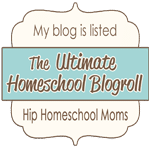Today's post is a compilation of prompts written by Brenda Woods of The Write Space. Brenda is a published author, established editor and journalist, and has been teaching creative writing for ten years. She is also a good Facebook friend of mine! :) You can read more about Brenda and The Write Space here.
While you are visiting The Write Space, be sure to read about a tiny warrior named Lily-Mae and consider getting the fundraiser book Tiny Dancer: A Book For Lily-Mae.
What Can You Do?
By Brenda Woods
“How can I keep this going?” enquired a parent after our
amazing Summer Camp. She noticed her child had left The Write Space talking
about fairies, aliens and things like adjectives and synonyms, and making up characters
she wanted to write about!
Her child was writing and reading out loud and feeling
confident.
So here are some guidelines as what you can do – as a parent
or caregiver – to keep that little creative mind working on their writing
abilities.
1. Think Like A Kid
It sounds silly – but try to be like a child. Get out of the
adult grown up world for a bit and go with the flow and listen to what they are
saying. Unlocking the creative imagination is key. If you can talk it, you can
write it.
Find the wonder in everything. A simple walk can turn into a
magical adventure. For example – those bubbles brimming in the little stream
are actually fairies dancing! Did you know that? It’s just we can’t see them
because they are Shy Fairies. Ask your child to tell you the names of other
fairies living in the stream. You might be very surprised with their answers.
2. Through the Portal
I love this one – the portal experience. Just like in C.S.
Lewis’ The Lion The Witch And The Wardrobe – think of something which once
opened, could transport you to the other side and into a magical land.
I used
to tell our children that if you opened the cupboard doors on one side of the
kitchen you could travel through a magic tunnel to one grandma and if you
opened the other kitchen cupboards under the sink, you would get to visit the
grandma who lived in the other direction.
Even think about this – if you put
your hand through the garden hedge on the stroke of midnight (no particular
reason for this time but it seems magical) then you will travel into another
dimension and meet new people. Who are those people?
3. Bedtime Stories
Read to your child at night in bed. Then close the book and
chat about your own characters. Tell one part of the story and your child tells
the other.
A good point to begin a story is at the start of a journey and the character
has to find something and meets interesting creatures on the way. Of course,
there is always the evil character following and trying to cause trouble!
4. Choose an Object
Look at something as simple as a pen and ask them to talk
about it. Is it a magical pen? Is it a naughty pen that writes bad things? Is
it a good pen that helps you write all the correct answers? If you were the pen
– what would you say – where are you from?
5. Write Now, Edit Later
This is part of our work here at The Write Space. Most of
all – we have FUN. We also try not to initially nit-pick with spellings and
grammar – can you imagine the Shy Fairies having someone interrupt their
adventures and tell them they are not speaking correctly?!
Thanks for sharing with us Brenda!
Class Discussion
Share your stories!
Happy Homeschooling!
Mrs. Redd
More Language Arts Links:
·



